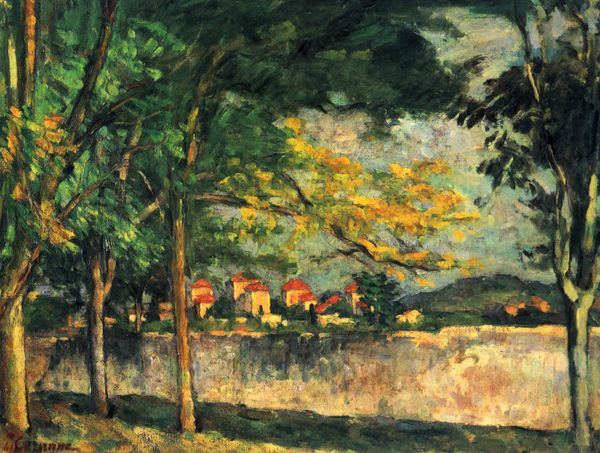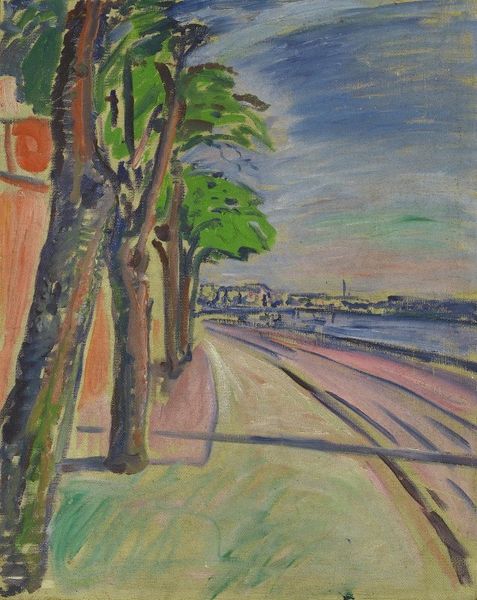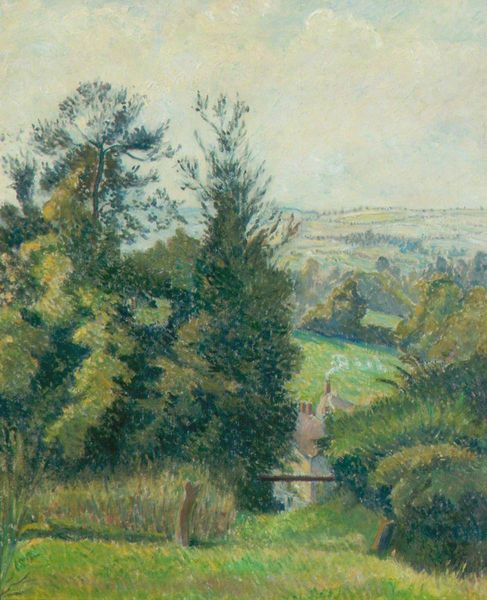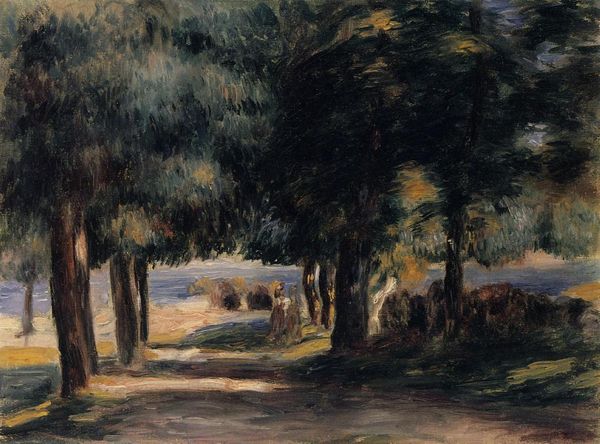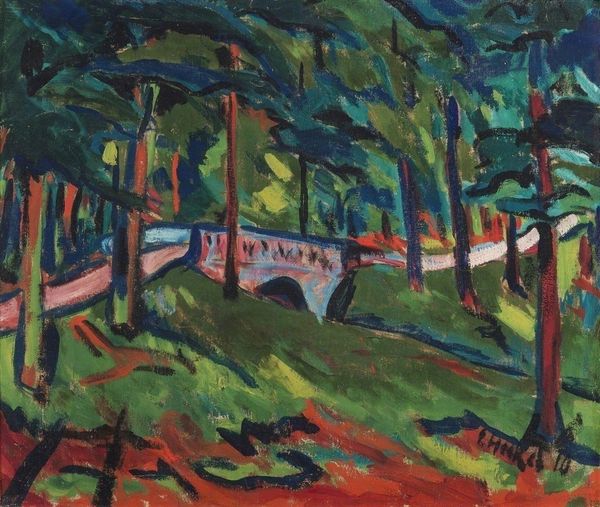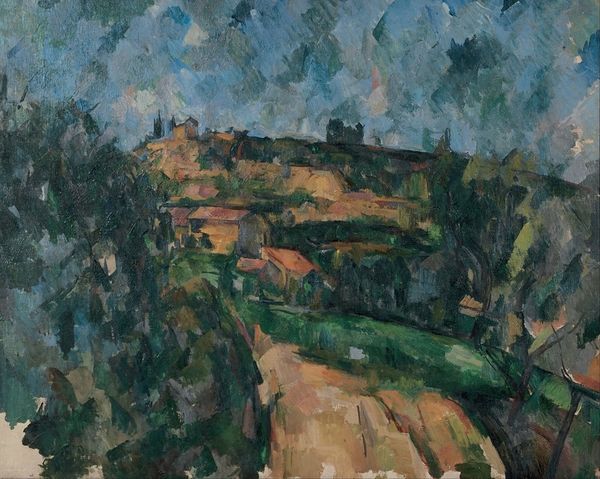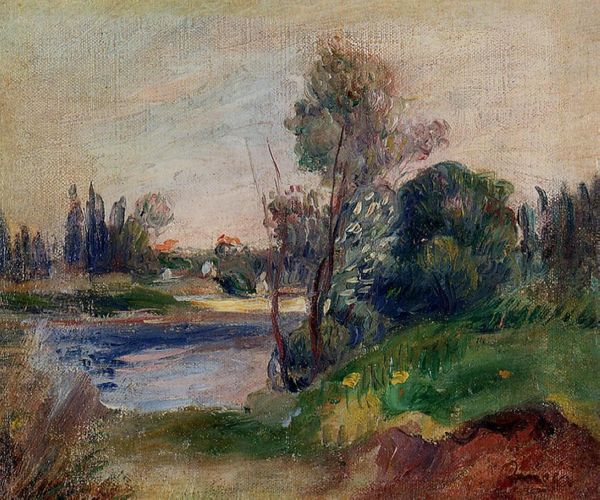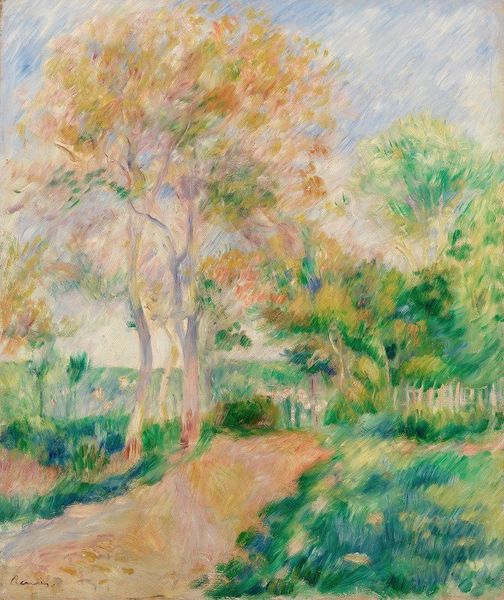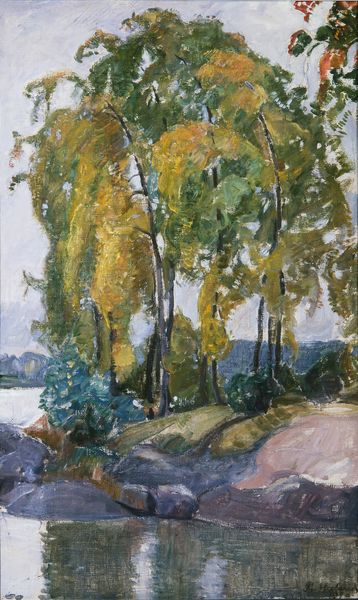
painting, plein-air, oil-paint
#
painting
#
impressionism
#
plein-air
#
oil-paint
#
landscape
#
impressionist landscape
#
nature
#
oil painting
#
post-impressionism
Copyright: Public Domain: Artvee
Curator: Paul Cézanne’s “Road Leading to the Lake,” an oil painting from around 1880, invites us to consider not just a scene, but a pathway—physically, and perhaps metaphorically, too. Editor: It strikes me immediately as a scene of profound tranquility. The road, painted with visible brushstrokes, curves invitingly, guiding the eye through this almost architectural frame of trees toward the light in the distance. Curator: Cézanne, deeply entrenched in the social and artistic currents of late 19th century France, constantly questioned academic conventions of landscape painting. You can observe that his commitment to ‘plein-air’ is palpable. But beyond capturing light, he aimed to reveal the underlying structure of nature, engaging with the ongoing shifts of representation in his time. Editor: Absolutely. It’s not merely representational. The layering of color, the distinct strokes—they build form as much as describe it. There’s a flattening effect; Cézanne is less concerned with photographic depth, instead exploring spatial relationships through color and texture, a real play between two and three dimensions. Curator: Which in its own right was quite a politically driven decision, defying what was expected of art in its cultural context. Take for instance the period, Impressionism had moved towards the suburbs and the countrysides of France, as an escape for the quickly modernizing industrial Paris, to attempt at reconnecting with nature and authenticity. Cézanne’s landscape should be thought of in relation to this longing and in contrast to modernity. Editor: I see it. The scene certainly lacks the usual markers of modernity. More fundamentally, notice how he creates depth through these distinct planes. There’s a definite tension created between near and far. This isn't just about showing us a landscape; it's about how we perceive it. He masterfully captures this. Curator: Thinking of this artwork and the sociopolitical backdrop it originates from, it can be said that what Cézanne captures so strikingly is an idealized longing, which carries over a more complex dialogue with nature and authenticity which has shifted through to our contemporary era. Editor: It’s amazing how this scene invites us in, only to hold us at a slight distance. We’re in the landscape, yet observing it simultaneously. It speaks to the beautiful tensions in seeing.
Comments
No comments
Be the first to comment and join the conversation on the ultimate creative platform.
